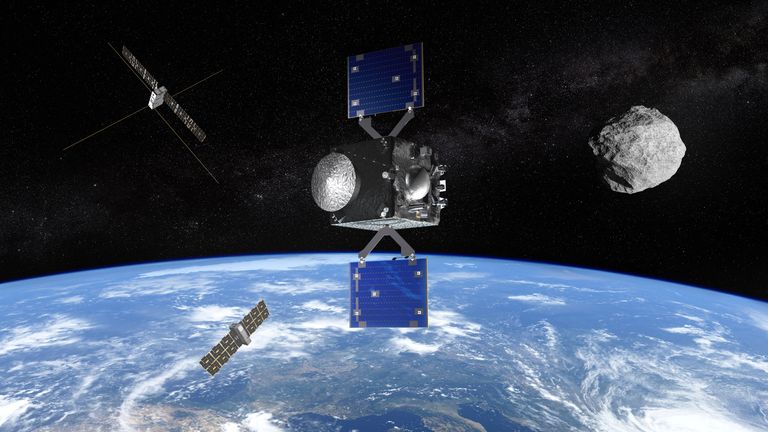A massive asteroid will skim past Earth in 2029 in an “extremely rare natural phenomenon” – and a spacecraft will be sent to track it.
It’s hoped the findings from the European Space Agency (ESA) mission will help defend our planet from any similar objects on a collision course in the future.
The asteroid 99942 Apophis will make an “exceptionally close flyby” of Earth on 13 April 2029, passing within 19,900 miles (32,000km) of its surface.
Around 2 billion people across much of Europe and Africa and parts of Asia will be able to see it with the naked eye if the sky is clear.
The ESA has received funding for preparatory work on the Rapid Apophis Mission for Space Safety (Ramses).
The Ramses spacecraft will meet Apophis before it passes Earth and accompany the asteroid during the flyby to study how it is changed by our planet’s gravity.
Apophis will miss Earth and astronomers have ruled out any chance the asteroid will collide with our planet for at least the next 100 years.
Astronomers believe an object this large – around 375m across, almost the size of the Empire State Building – comes this close to Earth only once every 5,000 to 10,000 years.
Patrick Michel, director of research at the French National Centre for Scientific Research (CNRS), said: “There is still so much we have yet to learn about asteroids but, until now, we have had to travel deep into the Solar System to study them and perform experiments ourselves to interact with their surface.
“For the first time ever, nature is bringing one to us and conducting the experiment itself.
“All we need to do is watch as Apophis is stretched and squeezed by strong tidal forces that may trigger landslides and other disturbances and reveal new material from beneath the surface.”
Ramses needs to launch in April 2028 in order to meet Apophis in February 2029, two months before it flies past Earth.
The ESA has been given permission by the Space Safety programme board to start prepatory work and a final decision on whether to commit to the mission will be made in November 2025.
Richard Moissl, head of ESA’s Planetary Defence Office, said this type of mission “is a cornerstone of humankind’s response to a hazardous asteroid”.
Scientists will study the composition, mass, density and internal structure of the asteroid and look at how Apophis changes during the flyby.
“These are all very important properties for assessing how best to knock a hazardous asteroid off a collision course with Earth,” the ESA said.

